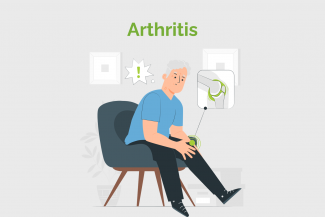Arthritis is often seen as a disease that affects the elderly but it can affect people of all ages. According to the Arthritis Foundation, two-thirds of people with arthritis are under the age of 65. And more people in their late 30s and 40s are now being diagnosed with the condition

What causes arthritis
Although the exact causes are unknown, it is believed to include the following:
- Genetics
- Injury
- Infection
- Lifestyle related factors, primarily, smoking, diet, use of oral contraceptives and excessive coffee intake
- Obesity
- Environmental factors, like stress
- Autoimmune conditions (your body's own immune system attacking the joints, causing inflammation - warmth, swelling, tenderness - within the joints)
Are you at risk
Are you:
- 65 or above in age: The risk of many types of arthritis — including osteoarthritis, rheumatoid arthritis and gout — increases with age.
- Younger people are increasingly suffering from osteoarthritis. (See article above)
- Have a family history of arthritis: Your genes can make you more susceptible to environmental factors that may trigger arthritis.
- A woman: Women are more likely than men to develop rheumatoid arthritis due to many hormonal changes.
- Have had a previous joint injury: People who have injured a joint, perhaps while playing a sport, are more likely to eventually develop arthritis in that joint.
- Obese: Carrying excess pounds puts stress on joints, particularly your knees, hips and spine. Obese people have a higher risk of developing arthritis.
Changed
05/Jul/2017
Condition







